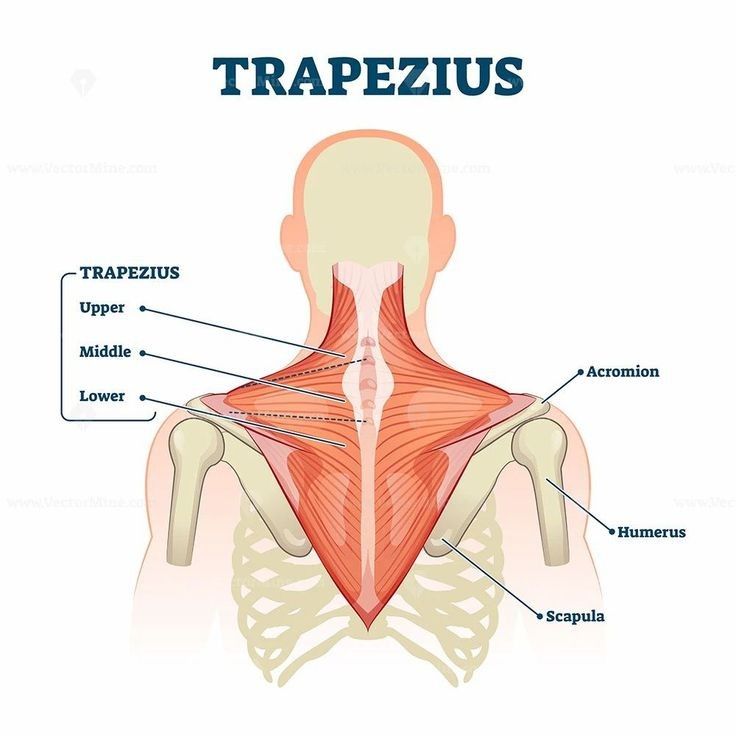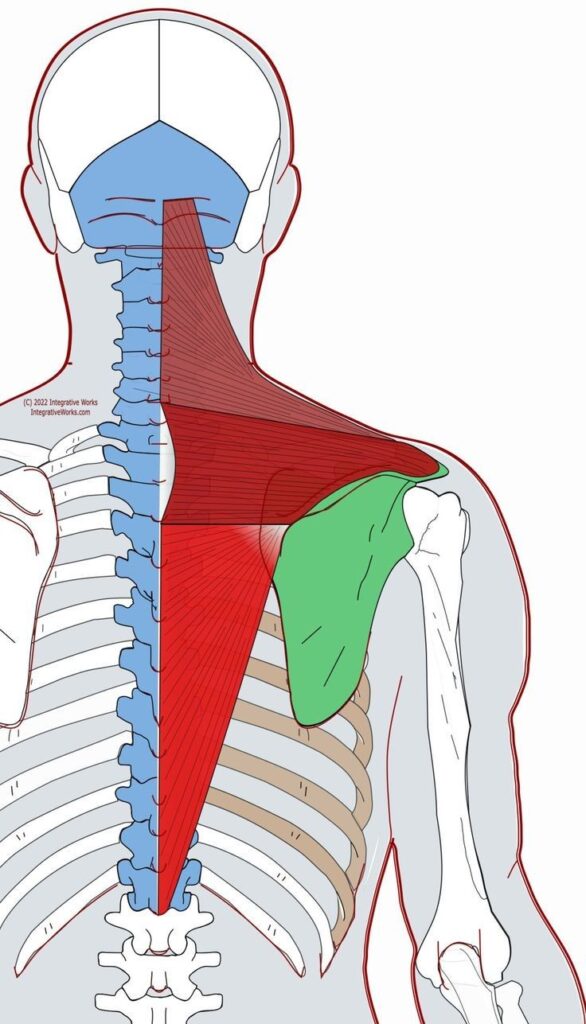The Trapezius Muscle: A Key Player in Strength, Posture, and Athletic Performance

The trapezius muscle, often referred to as the “traps,” is one of the most prominent and functionally significant muscles in the human body. Located in the upper back and neck, this large, triangular-shaped muscle plays a critical role in movement, posture, and overall athletic performance. From everyday activities like lifting groceries to high-intensity sports like swimming or weightlifting, the trapezius is a powerhouse that deserves attention and care.

Anatomy of the Trapezius Muscle
The trapezius is a broad, flat muscle that extends from the base of the skull down to the mid-back and out to the shoulders. It is divided into three distinct regions, each with its own unique functions:
1. Upper Trapezius: This portion runs from the base of the skull to the collarbone and is responsible for elevating the shoulders (shrugging) and assisting in neck extension and rotation.
2. Middle Trapezius: Located between the shoulder blades, this region retracts the scapulae (pulling the shoulder blades together), which is essential for maintaining good posture.
3. Lower Trapezius: This part extends from the mid-back to the lower spine and helps depress the shoulder blades (pulling them downward) and stabilize the scapulae during overhead movements.
The Importance of the Trapezius in Sports Physical Therapy
From a sports perspective, the trapezius muscle is vital for athletes across various disciplines. Whether you’re a swimmer, a tennis player, or a weightlifter, strong and well-conditioned traps are essential for optimal performance. Here’s why:
1. Stability and Control: The trapezius helps stabilize the shoulder girdle, which is crucial for movements like throwing, swinging, or lifting. Without proper trapezius strength, athletes may experience shoulder instability, leading to poor performance or injury.
2. Posture and Alignment: Poor posture is a common issue among athletes and non-athletes alike. A weak or imbalanced trapezius can lead to rounded shoulders and a forward head posture, increasing the risk of neck and shoulder pain. Strengthening the traps helps maintain proper alignment, reducing strain on the spine and improving overall posture.

3. Power and Endurance: In sports like boxing, wrestling, or rock climbing, the trapezius plays a key role in generating power and endurance. Strong traps allow athletes to maintain their form and performance over extended periods.
From a physical therapy standpoint, the trapezius is often a focal point in rehabilitation programs. Injuries such as strains, sprains, or overuse syndromes (e.g., “trap pain” or “neck stiffness”) are common, especially among individuals who perform repetitive overhead movements or have poor posture. Physical therapists emphasize strengthening and stretching the trapezius to restore function, alleviate pain, and prevent future injuries.
Exercises to Strengthen and Stretch the Trapezius
Whether you’re an athlete looking to enhance performance or someone seeking to improve posture and reduce pain, incorporating trapezius-specific exercises into your routine is essential. Here are some effective exercises:
Strengthening Exercises:
1. Shrugs:
– Stand with a dumbbell in each hand, arms at your sides.
– Elevate your shoulders toward your ears, hold for a second, then lower slowly.
– Focus on the upper trapezius for shoulder elevation.
2. Face Pulls:
– Attach a rope to a cable machine at chest height.
– Pull the rope toward your face, keeping your elbows high and squeezing your shoulder blades together.
– This targets the middle trapezius and improves scapular retraction.
3. Y-T-W Raises:
– Lie face down on an incline bench or stability ball.
– Raise your arms to form a “Y,” then a “T,” and finally a “W” shape, squeezing your shoulder blades together.
– This exercise engages all three regions of the trapezius.
4. Overhead Press:
– Using dumbbells or a barbell, press the weight overhead while keeping your core engaged.
– This strengthens the lower trapezius, which is crucial for shoulder stability.
Stretching Exercises:
1. Neck Stretch:
– Gently tilt your head to one side, bringing your ear toward your shoulder.
– Hold for 20-30 seconds, then switch sides.
– This stretches the upper trapezius and relieves tension.
2. Cross-Body Shoulder Stretch:
– Bring one arm across your chest and use the opposite hand to gently pull it closer.
– Hold for 20-30 seconds, then switch sides.
– This targets the middle and lower trapezius.
3. Child’s Pose:
– Kneel on the floor, sit back on your heels, and extend your arms forward on the ground.
– Lower your chest toward the floor and hold for 30 seconds.
– This stretch relaxes the entire trapezius and upper back.
Conclusion
The trapezius muscle is a cornerstone of upper body strength, posture, and athletic performance. By understanding its anatomy and incorporating targeted exercises into your routine, you can unlock its full potential and reduce the risk of injury. Whether you’re an athlete striving for peak performance or someone seeking to improve everyday function, giving your trapezius the attention it deserves will pay dividends in the long run. So, shrug, stretch, and strengthen your way to a healthier, more powerful you!
NIGAH E ZAHRA SYED


